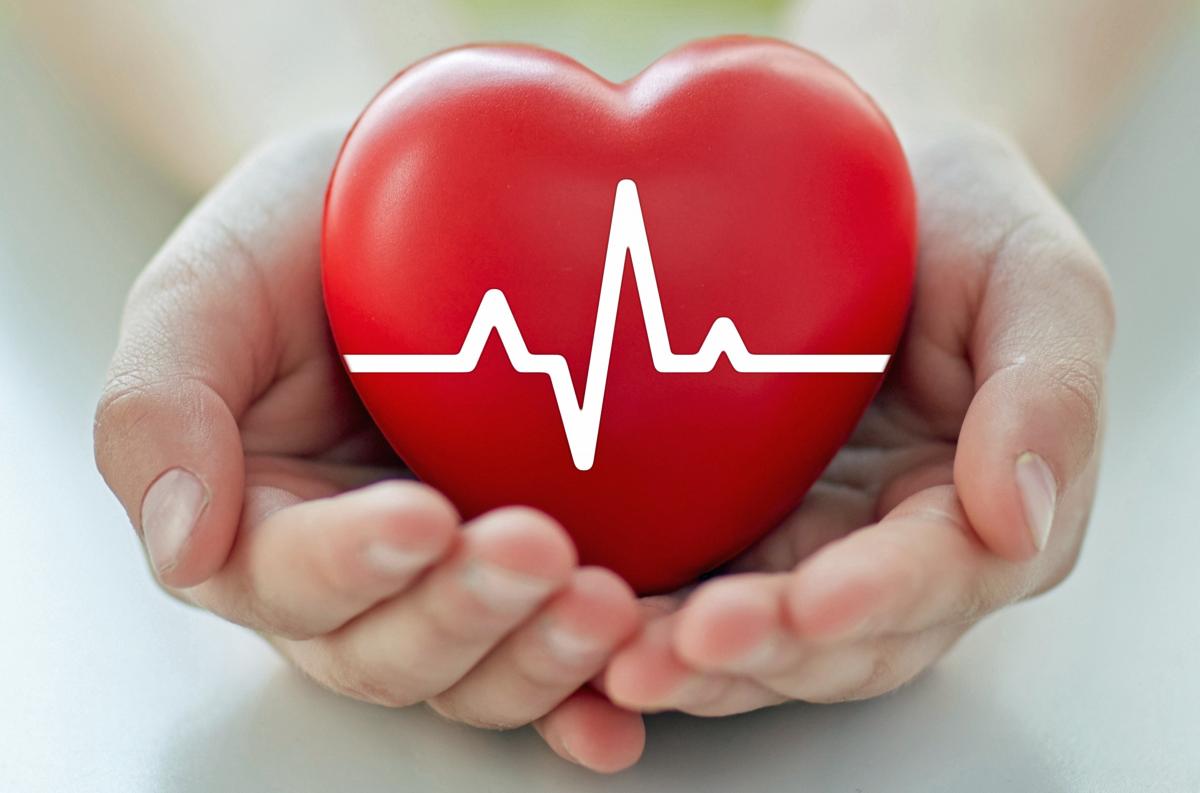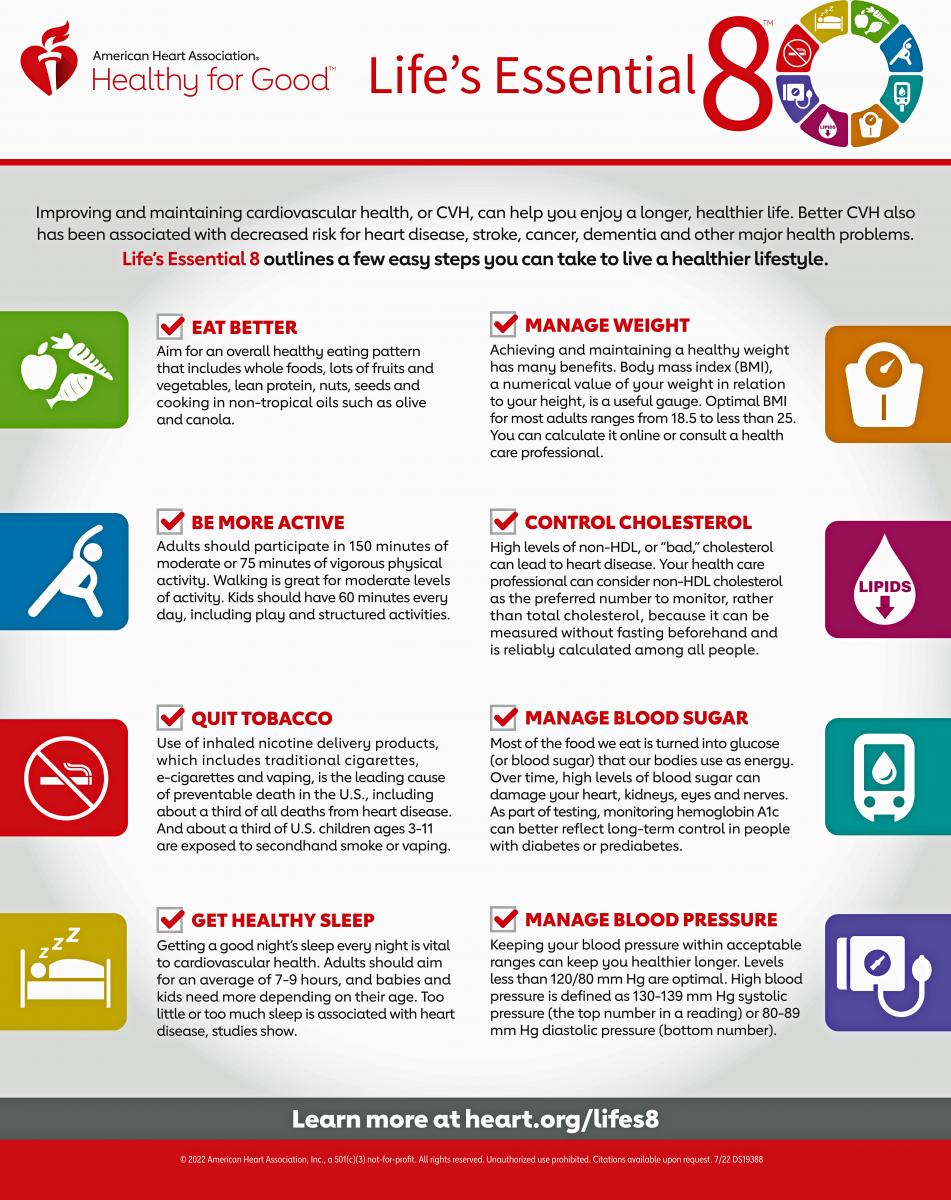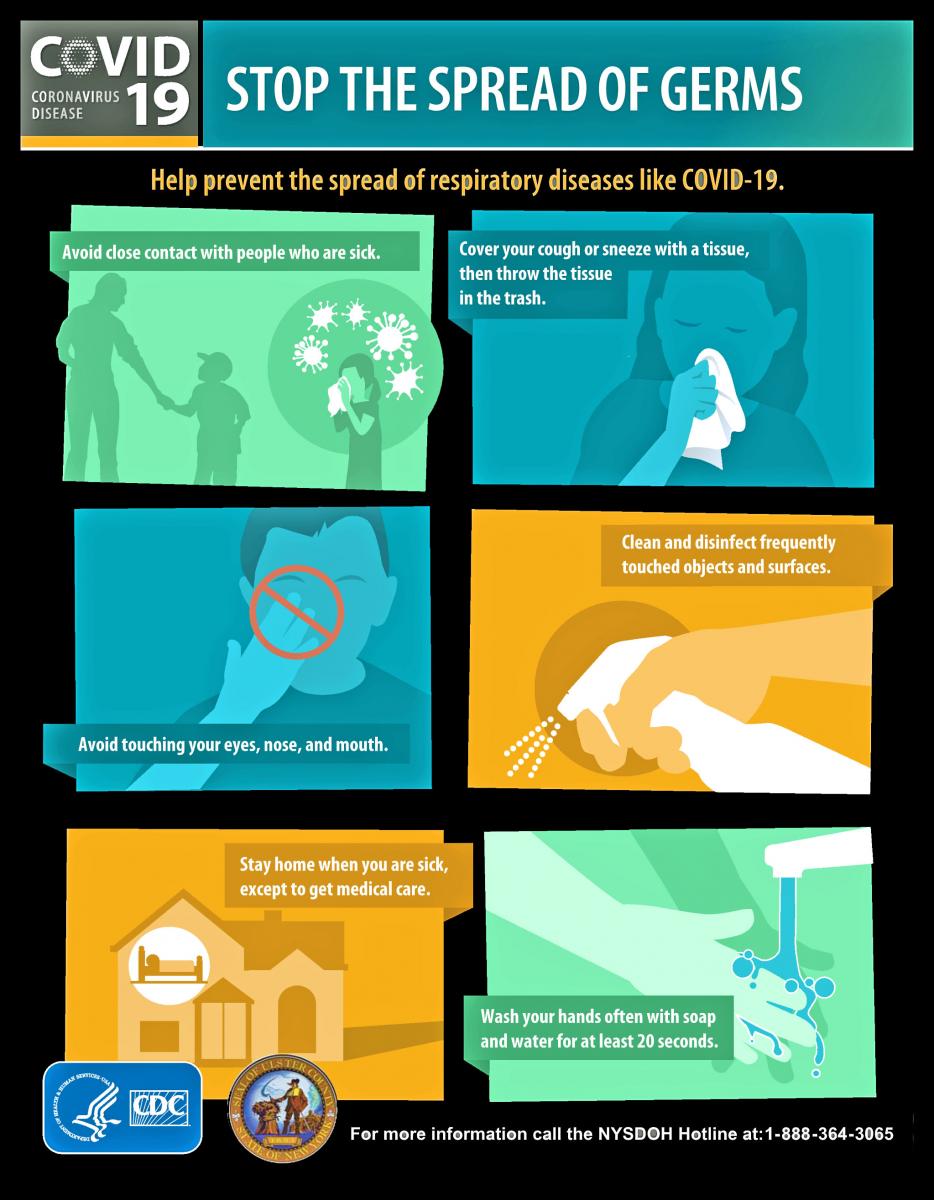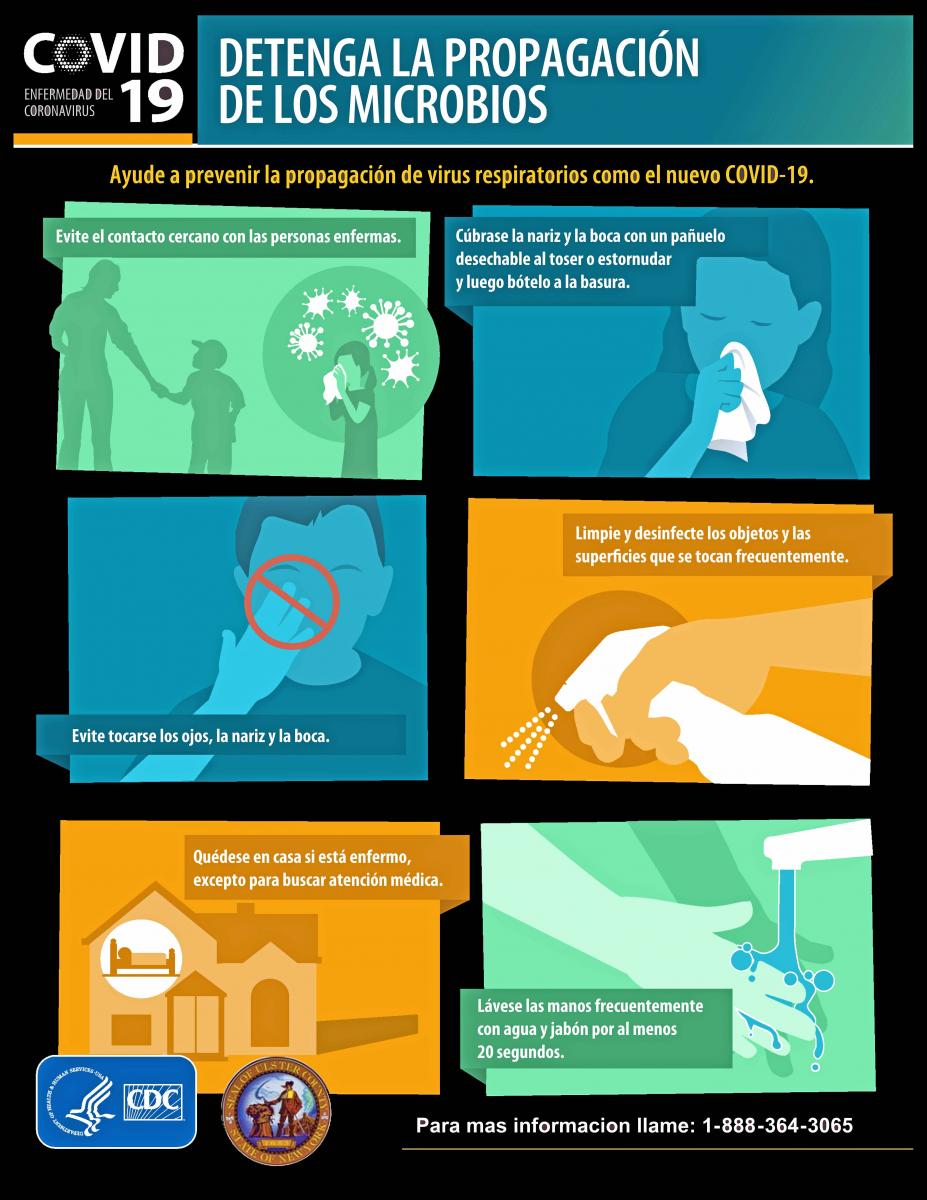Heart Disease is the Leading Cause of Death in Ulster County - and the Nation: Ulster County Health Department has put together a team of health and wellness professionals, and community partners, to create a plan to reduce the heart disease fatality rate in out community. You can help by talking this short and anonymous survey that will help guide our efforts - Thank You!

Your Heart Speaks to You; are You Listening? The Early Signs of Heart Failure
Do You Know the Common Heart Attack Warning Signs?

HOW TO IMPROVE YOUR HEART HEALTH AT ANY AGE - CNN
West Nile Virus (WNV) & Eastern Equine Encephalitis (EEE)
COVID-19
Know the Risks of Radon and How You Can Protect Your Family

Radon is a naturally occurring, radioactive gas found in soil and rock. It seeps into homes through cracks in the foundation, walls, and joints. Radon comes from the natural (radioactive) breakdown of uranium in soil, rock and water and gets into the air you breathe. It can get into any type of building--homes, offices, and schools--but you and your family are likely to get your greatest exposure at home, where you spend most of your time. Among nonsmokers, radon is the leading cause of lung cancer in the United States. Based on U.S. Environmental Protection Agency estimates, lung cancer due to radon exposure claims about 21,000 US lives annually. In many cases lung cancer can be prevented; this is especially true for radon-related lung cancer. To learn more, including prevention measures, click here..
Environmental Protection Agency's Citizen's Guide to Radon
The 6 Pillars of Wellness - Mark Devine/Unbeatable Mind
1. Reduce Stress and Mindful Breathing Practice
2. Fitness and Movement (walking, exercise, yoga, martial arts, dance, others that you enjoy and that work for you)
3. Good Nutrition (low saturated fat and sugar intake, plenty of fresh fruits and vegetables, whole grains, healthy low-fat proteins, and substitute water for sugar sweetened beverages)
4. Sleep and Recovery (make time for downtime and get sufficient sleep every night. It's essential)
5. Time in Nature and Silence (turn off the devises and get outside. Spending time in nature greatly enhances physical, emotional and spiritual well-being)
6.Social Connections (Make time for your family, friends and to make new aquaintances. Human beings are "hard wired" to be social animals. Research shows that social connectivity is absolutely essential to good health, wellness and longevity)
How to Read a Food Label - NY Times (11.04.21)
How to Consume Less Sugar - NY Times (11.04.21)
How to Get a Better Night's Sleep - NY Times (09.07.21)
The Benefits of Moderate Exercise - NY Times (09.07.21)
Healthy Minds: Your Path to Well-Being, Powered by Science
How Walking Can Build Up the Brain...read here - NY Times 07.14.21
Is Your Sedentary Lifestyle Harming You? THE ANSWER IS "YES"

The sedentary lifestyle is easy to fall victim to.
Research has shown that a sedentary lifestyle—sitting for long periods of time on a daily basis—leads to obesity, cancer, and risk of death from cardiovascular disease. Just sitting in front of your TV for more than 4 hours a day increases your mortality risk by any cause by nearly 50 percent! And it’s not just channel surfing. Any extended sitting, such as behind a desk or driving all day—can be harmful to your health. And spending a few hours at the gym each week doesn’t seem to significantly offset the risk of a sedentary lifestyle.
So, what to do? Sit less, move more—all day long. If you’re reading this, stand up! If you’re listening to music, stand up and move! The muscular effort you use will help burn calories and trigger the important breakdown of fats and sugars in the body. Every time you stand or actively move, you kick those fat-burning processes into gear. When you sit, they stall!
Here are some simple ways to combat your sedentary lifestyle and help you stand up for a longer, healthier life:
– Set your smart phone alarm, computer or clock to ring on the hour to remind you to stand up, refill your cup of water, and take a short walk.
– Do this quick yoga routine several times a day.
– Stand up and do some leg raises.
– Take all phone calls on your feet.
– Schedule a “walking date” or learn to take meetings walking.
– Park your car further away and walk to your destination!
– Always take the stairs, instead of the elevator. Even one floor will do your body good.
Frequent Handwashing, especially before eating, is one of the best ways to protect yourself from viruses and other communicable diseases. Here's how to do it right:


Cyber-Bullying is not only harmful, but it's also against the law in Ulster County.
The NYS Dignity for All Students Act also helps ensure that all students can feel safe in every classroom
When adults respond quickly and consistently to bullying behavior they send the message that it is not acceptable. Research shows this can stop bullying behavior over time.
Parents, school staff, and other adults in the community can help kids prevent bullying by talking about it, building a safe school environment, and creating a community-wide bullying prevention strategy.
5 Ways to Deal With Haters and Trolls
4 Ways to Help Teens Avoid Digital Harassment
The department maintains a listing of preventative services and resources available locally, statewide & nationally.
- NY State Health Department: http://www.health.state.ny.us
- Centers for Disease Control: http://www.cdc.gov
- Guide to Community Preventive Services: http://www.thecommunityguide.org:
- Health Information Project - Mid-Hudson Library System: http://midhudson.org/hip/main.htm
- New York State Assembly: http://www.assembly.state.ny.us
- Tobacco Free Action Communities: http://tobaccofreeactioncommunities.org/
- American Lung Association: http://www.lungusa.org
- National Heart, Lung and Blood Institute: http://www.nhlbi.nih.gov
- American Heart Association: http://www.americanheart.org
- American Council on Exercise: http://www.acefitness.org
- Community Heart Health Coalition of Ulster County: http://chhculster.org/
- American Diabetes Association: http://www.diabetes.org:
- American Diabetic Association: http://www.eatright.org
- Nutrition Consortium of NYS: http://www.hungernys.org
- Food and Health Communications: http://www.foodandhealth.com
- NYSDMY - Traffic Safety Committee: http://www.safeny.com
- US Consumer Product Safety Commission: http://www.cpsc.gov
- Cornell Cooperative Extension: http://www.cce.cornell.edu
- US Environmental Protetion Agency: http://www.epa.gov
- American Cancer Society: http://www.cancer.org
- Upstate New York Poison Center: http://www.upstate.edu/poison/
- Poison Prevention: http://www.poisonprevention.org
More Prevention Topics (in alphabetical order)
Bed Bug Prevention and Remediation
Bicycle Safety (and other wheeled recreation safety)
Burns Prevention (1)
Burns Prevention (2)
Coaches Fact Sheet on Preventing Concussions
Motor Vehicle Occupant Safety (1)
Motor Vehicle Occupant Safety (2)
Pedestrian Safety (Safe Routes to School)
Playground Safety and Home Injury Prevention
Poison Prevention Teaching to Grades K-3
Shaken Baby Syndrome Prevention (1)
Shaken Baby Syndrome Prevention (2)
Shaken Baby Syndrome Prevention (3)
Suicide and Violence Prevention
Suicide and Violence Prevention/NYSDOH Prevention Agenda
Traumatic Brain Injury Prevention
Traumatic Brain Injury Prevention Related to Sports Concussions
Unintentional Injury Prevention/NYSDOH Prevention Agenda
Violence Prevention and Injury Prevention
Prevention Resources for the Healthcare Community
Colorectal Cancer Prevention - Increasing Screening Rates: A Manual for Community Health Centers
American Diabetes Association’s Clinical Practice Recommendations
NYSDOH Diabetes Prevention and Management Toolkit
New York State Health Department’s Prevention Agenda


